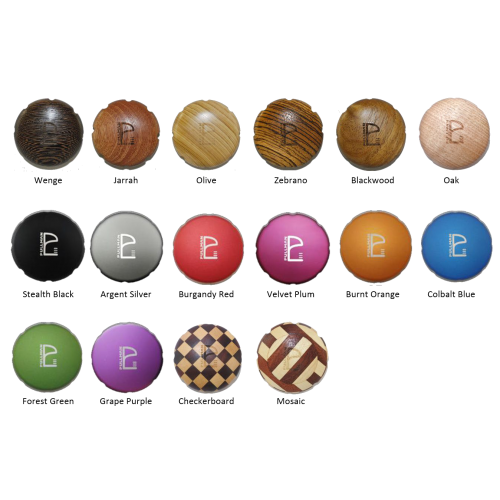What's important
The success of every espresso is to start with an evenly dense coffee puck.
This leads to a higher extraction which enhances the flavours and balances the profile of your valuable coffee.
How is this different from other distribution methods?
- Consistency between staff
Example: a café has 4 different baristas on bar throughout the day, with different levels of experience, technique, skills, knowledge, care factor, efficiency etc. Even one barista can distribute different ways throughout the day. Using a re-distribution tool ensures more consistently extracted espresso despite changing elements.
- Hygiene is a priority
There's no need for fingers or hands to touch the coffee grinds with a distribution tool. Food grade stainless steel with a specially finished surface reduces retention and static, so the chisel blade can also remain contact free.
Why do we call it a Re-Distribution Tool?
Delivering the grinds into the basket is your initial distribution and this first step is often discounted as affecting your coffee. We recommend grinding into a dosing cup to allow the grinds to fall into the basket with as even a density as possible. A distribution tool is not going to make a difference if you are not considering these things first.
Specifications
- Step-less depth adjustment
- Light-weight (431.5g)
- Starts at 6% surface area compression
- A “chisel” shape with a steep angle of the face ensures the density of coffee is not localised
- A low-friction contact surface for the spinning action - stainless on stainless – reducing the chance of repetitive strain injury
- Hand finished base resulting in less static build-up
- 316 grade stainless steel
Check out how it works here
Sizes
Available in 3 sizes for different espresso machines.
Here are some of the popular brands our Chisel Base suits:
|
53.30mm
|
58.00-58.40mm
|
|
Breville
|
Synesso
|
|
Sunbeam
|
Slayer
|
|
Faema
|
La Marzocco
|
|
La Pavoni
|
Sunbeam
|
|
Delonghi
|
Astoria
|
|
Estro
|
Bezzera
|
|
Olympia
|
ECM
|
|
Saeco
|
Expobar
|
|
La Vivaldi Spaziale
|
Faema
|
| SAGE |
Gaggia
|
| |
Rancilio Silvia
|
| |
E61 group heads
|
Technical 101
Any tool that pushes coffee in a downward motion is tamping.
To help increase the goal and chances of even puck density, there needs to be a happy compromise of enough equal downward motion (tamping) and horizontal movement (re-distribution) leaving still enough movement of compression when tamping. Here’s what will happen if you do not set the Chisel correctly:
NOT ENOUGH DOWNWARD AND HORIZONTAL MOVEMENT (CHISEL BASE DEPTH SET TOO SHALLOW)
Increased air pockets due to coffee being separated by ‘pulling’ grinds during movement
Channelling not only through uneven sides, but also chance of channelling through the centre of the coffee puck due to uneven density formed by these airpockets (even after tamping)
TOO MUCH DOWNWARD AND HORIZONTAL MOVEMENT (CHISEL BASE SET TOO DEEP)
After using, the tool will create too much downward motion and not enough sideways/horizontal movement resulting in uneven coffee puck density
Performing tamp action after this step will unseat or potentially crack the coffee puck leading to increased chances of channelling but also uneven water path/flow during extraction
LEARNING TO SET THE DEPTH OF THE CHISEL BASE TO USE THIS TOOL TO ITS BEST CAPABILITIES IS BY FAR THE MOST IMPORTANT ASPECT OF THIS TOOL.
The ‘happy’ place, meaning the correct depth setting, is a mixture of just enough downward/sideways re-distribution but also allowing some compression movement during the tamping stage.
Again, after performing the re-distribution with the Chisel, if when tamping there is not much compression or downward movement, the Chisel is set too deep and conversely, if there is too much compression or downward movement when tamping, the Chisel is not set deep enough.
WE HAVE FOUND THAT THERE IS A ‘HAPPY’ PLACE WITH MOST DOSES (IRRESPECTIVE OF ITS ROAST LEVEL, THOUGH THIS MUST BE TAKEN INTO ACCOUNT WITH SWITCHING BETWEEN ROASTS) TO BE AROUND A 2MM OF TAMPING COMPRESSION OR DOWNWARD MOVEMENT. Check out how to adjust the chisel here
This helps achieve a better chance of even distribution using the Chisel, but still allows the tamping action to properly perform the task that it's meant to - compressing the air pockets out of an evenly distributed coffee bed.



















